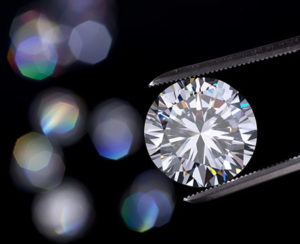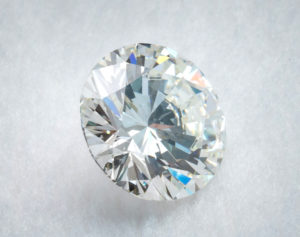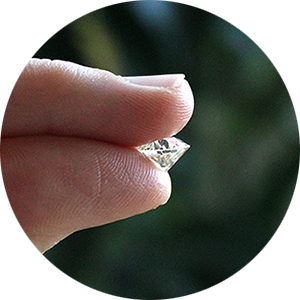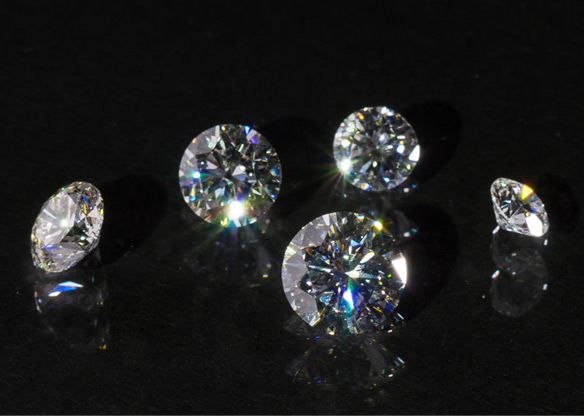The Six “C’s”
Healing Diamonds may look like average jewelry diamonds, but they have special energetic properties that make them suitable for therapeutic purposes known as Diamond Therapy.
Like jewelry diamonds, Therapy Diamonds (trade name TheraDiamondsTM) are graded using four physical parameters established by the Gemological Institute of America (GIA): color, clarity, carat, and cut. These are known as “the four c’s” and are commonly used in the jewelry industry.
Here, we’ll be discussing two more “c’s.” The fifth “c” is commonly attributed to the cost of a diamond, and the sixth “c,” unique to Therapy Diamonds, stands for the compatibility between a Diamond and its owner. In this blog, we’ll define these six “c’s” and discuss them in terms of a Therapy Diamond’s healing potential.
The Gemstone Therapy Institute uses this system to help customers understand the physical qualities of Therapy Diamonds and how these characteristics are reflected in the Diamonds’ energetic properties.
C = Diamond Cut
 Diamonds are faceted gemstones that are cut into a variety of shapes, such as oval, square, pear, rectangular, and princess cut. For therapeutic purposes, we are interested only in round diamonds.
Diamonds are faceted gemstones that are cut into a variety of shapes, such as oval, square, pear, rectangular, and princess cut. For therapeutic purposes, we are interested only in round diamonds.
Round diamonds come in a variety of faceting styles, the most common of which is the round modern brilliant. However, we have found diamonds with the proper energetic parameters that have old-style cuts as well as special modified brilliant cuts with more facets than round modern brilliants. The unusual faceting style of these special Therapy Diamonds adds to their unique personalities.
It is possible that diamonds with other cut styles may have healing energy, but they should not be used therapeutically as healing diamonds. Only the round shape allows a Therapy Diamond’s energies to be evenly distributed throughout the stone and to work evenly and thoroughly throughout a person’s body and aura.
C = Color
A diamond’s color refers to its body color. Except for fancy colored diamonds, the general rule is that the more coloration in a diamond, the more common it is. The less color, the rarer the diamond.
In the diamond industry, natural coloration in a diamond is graded from D to Z, with D representing the rarest and most valuable Diamonds with no body color at all. In order to be colorless, a diamond must be chemically pure, meaning it consists only of carbon atoms. A small amount of nitrogen gives the stone a yellowish hue, and boron can make a diamond appear blue.
 Therapy Diamonds can have any grade of body color along the D-to-Z scale. The higher the body color, meaning the closer to D, the more directly the Diamond seems to work. In contrast, Therapy Diamonds with color ratings starting around J, and certainly those with M or lower color ratings, work more gently.
Therapy Diamonds can have any grade of body color along the D-to-Z scale. The higher the body color, meaning the closer to D, the more directly the Diamond seems to work. In contrast, Therapy Diamonds with color ratings starting around J, and certainly those with M or lower color ratings, work more gently.
Diamonds with higher color grades seem to work more directly, whereas those graded J or lower work more gently.
C = Clarity
A diamond’s clarity rating gives you some idea of the number, position, size, nature, and relief of its imperfections. Most commonly, these are the result of irregularities in the diamond’s crystalline matrix or the presence of other minerals or crystals—including diamond crystals—inside the diamond’s body.
Imperfections on a diamond’s surface are called blemishes; those inside the body of the stone are called inclusions. Blemishes and inclusions can occur during the diamond’s formation and its travel to the Earth’s surface, during the cutting and polishing process, or during attempts to artificially improve the diamond’s clarity.
The Gemological Institute of America has carefully devised a diamond clarity rating system that is commonly accepted by jewelers worldwide. The ratings are abbreviated as IF, VVS, VS, SI, and I.
- IF means “internally flawless.” A diamond with this rating is free of internal inclusions but may have certain minor blemishes.
- VVS stands for “very, very slightly” included. A diamond in this category may have a single inclusion the size of a pinpoint.
- VS means a diamond is “very slightly” included, and SI means “slightly included.” Diamonds with these grades have progressively more visible inclusions—under 10x magnification.
- I stands for “included.” These diamonds have blemishes or inclusions that are visible with the naked eye.
Therapy Diamonds may have a clarity rating of IF, VVS, or VS. Sometimes SI stones are acceptable depending on the position and size of the inclusions. For example, they shouldn’t be pronounced in the center of the diamond’s table, which is the uppermost facet of the diamond.
The higher a Therapy Diamond’s clarity, the faster it seems to work. It’s as though nothing stands in its way of doing its job—to awaken your inherent blueprints of optimal health and function and remind your body how to access this essential information for healing. No other crystal, mineral, or gemstone can do these things.
C = Carat Weight
Carats are the standard unit of measurement for weighing diamonds. A carat is one-fifth of a gram. Diamonds are also measured in points. There are 100 points to a carat.
While “size” usually refers to dimensions and the term “weight” to an object’s mass, the two words are often used interchangeably when working with diamonds.
Any size diamond can have the energetic parameters used to determine therapeutic quality. The larger the stone, the rarer it is, and the less likely it will be to carry therapeutic energies throughout the entire Diamond crystal. Sometimes, only a portion of a larger Diamond carries color rays.
 Therapy Diamonds are often applied by holding the stone in your fingers in various ways and at certain key master points on and around the body. Therefore, except when cost is a factor, most Therapy Diamond owners prefer Diamonds to be at least one-half carat. These Diamonds usually measure just over 5 mm in diameter and are not too difficult to hold in your fingers and use in therapeutic ways. The larger the Therapy Diamond, of course, the easier it will be to apply.
Therapy Diamonds are often applied by holding the stone in your fingers in various ways and at certain key master points on and around the body. Therefore, except when cost is a factor, most Therapy Diamond owners prefer Diamonds to be at least one-half carat. These Diamonds usually measure just over 5 mm in diameter and are not too difficult to hold in your fingers and use in therapeutic ways. The larger the Therapy Diamond, of course, the easier it will be to apply.
Smaller Therapy Diamonds (around one-half carat or under) are better for focusing on particular areas of the body or specific life intentions. Large Therapy Diamonds, those over one carat, tend to have a wider reach. You can still use them for small areas, but their energies will naturally influence all aspects of you and your life that relate to that one area.
C = Cost
Diamonds are priced based on their carat weight. All other factors being equal, the larger the diamond, the rarer it is, and thus the higher its price. Price thresholds are also a factor. A diamond that weighs one carat will be considerably more expensive than a diamond that weighs .99 carat. The one-carat mark is a price threshold.
Since the introduction of the internet, diamonds have become a commodity. Anyone can now buy a diamond at wholesale prices by going online. Simply type in your desired color, clarity, and cut style, and you can choose from a variety of diamonds that meet your parameters from dealers all over the world.
This is because of the time, energy, expertise, and risk involved in finding them. Only about two percent of the diamonds that meet the physical parameters have the energetic properties required for that stone to have healing properties.
This is why the Therapy Diamonds we offer at the Gemstone Therapy Institute are much more expensive than most of the diamonds you’ll find at your local jeweler. There is also a great deal of time, energy, expertise, and risk involved in finding them.
Each one has to be removed from its case and inspected by hand. This is a tedious process. It can take an entire day to review a hundred diamonds, only to find two that have the right energetic makeup to meet our therapeutic standards.
Evaluating diamonds is also risky. Many of them carry energies that are very harmful. You won’t know it if you handle diamonds all day with tweezers, as jewelers usually do. They keep the jewelers safe.
But once you start holding diamonds in your hands, you become susceptible to their energies. You don’t know you’ve found a bad one until it has affected you. These diamonds can make you feel instantly sleepy, disassociated from your body, unable to focus or think clearly, lightheaded and dizzy, and generally ill. It’s important to know how to rebalance yourself if this occurs, and the best way to do that is with a genuine Therapy Diamond.
C = Compatibility
The sixth “c” stands for the compatibility between a person and his or her Diamond. This is very important to us and is why we offer our Diamond Concierge Service. We want to make sure our customers find a Therapy Diamond that not only feels good to them, but can also serve as their partner in therapy, whether they use it for self-therapy or to work with clients in the diamond healing arts practice.
 Every diamond is unique, not only physically but also in the way it feels. You might call this the diamond’s personality.
Every diamond is unique, not only physically but also in the way it feels. You might call this the diamond’s personality.
You want to find a Therapy Diamond that resonates with you, that makes you feel good. Customers who use our concierge program notice clear distinctions between each Diamond they experience. It becomes easy to choose the right one. In fact, in most cases, people say it’s the other way around: the Diamond chooses them.
The compatibility between a diamond and owner is probably the most important of the six “c’s” we’ve discussed. This is the benefit of working with our Diamond Concierge.
Using her proprietary methods, she can help you find a Therapy Diamond that is compatible with you. By the end of the session, you’ll have experienced a variety of Therapy Diamonds and their energies and most likely discovered a personal connection with one of them.
Are you ready to choose your Therapy Diamond?
MAKE AN APPOINTMENT WITH OUR THERAPY DIAMOND CONCIERGE
